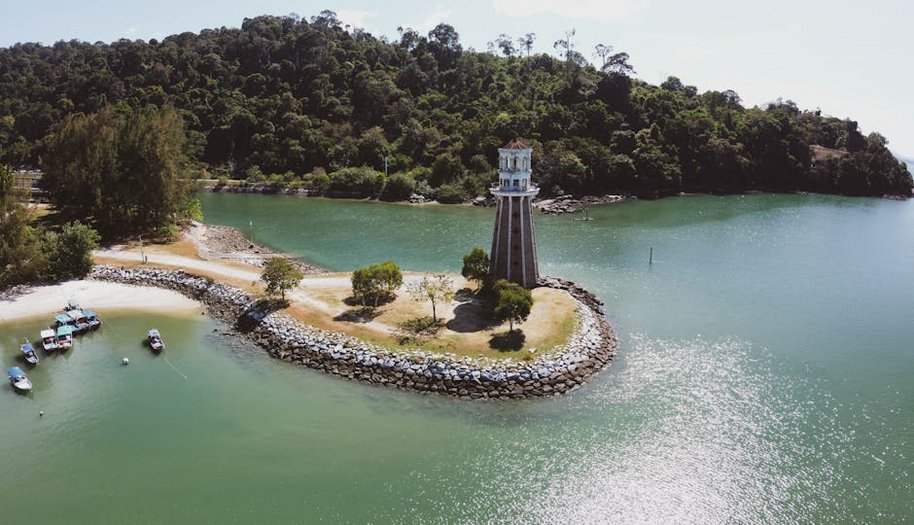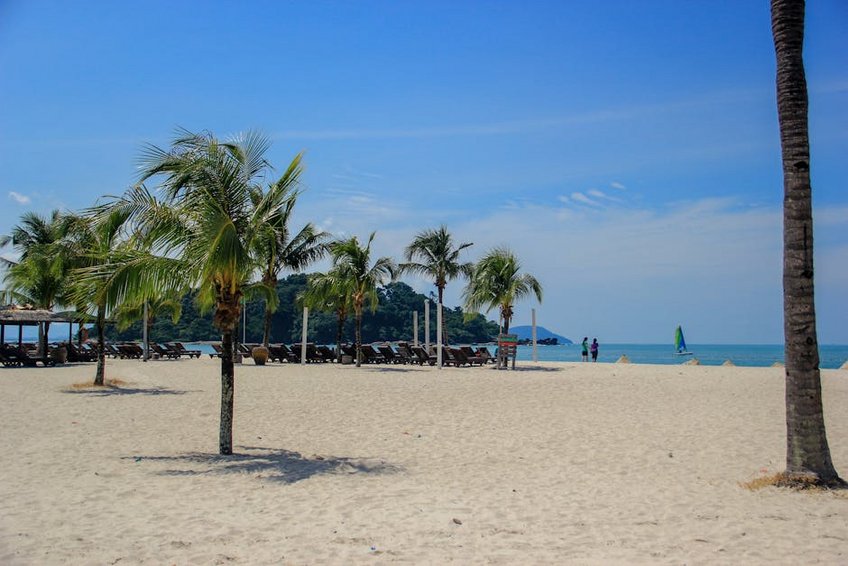Langkawi Beaches: Your Ultimate Guide to Malaysia’s Tropical Paradise
Imagine sinking your toes into powder-soft white sand as turquoise waves gently lap at the shore, with lush green rainforest-covered mountains forming a breathtaking backdrop. This is the reality of Langkawi beaches, a stunning archipelago of 99 islands in the Andaman Sea off Malaysia’s northwestern coast. As a certified UNESCO Global Geopark, Langkawi offers more than just beautiful coastlines; it presents a unique blend of geological wonders, rich biodiversity, and cultural heritage that makes every beach visit an unforgettable experience. You’ll discover that each of the main Langkawi beaches has its own distinct personality, from the vibrant social scenes of Pantai Cenang to the secluded serenity of Datai Bay. Whether you’re planning a romantic getaway, a family vacation, or a solo adventure, understanding what makes each beach special will help you create the perfect tropical itinerary that matches your travel style and expectations perfectly.
Langkawi Beaches Essential Information – Getting to Know the Islands
Before you start planning your sun-soaked adventure, it’s crucial to understand what makes Langkawi such a special destination. The archipelago enjoys a tropical monsoon climate with consistently warm temperatures ranging from 77°F to 90°F (25°C to 32°C) year-round, though rainfall patterns vary significantly between seasons. Langkawi’s status as a duty-free island adds to its appeal, making everything from chocolates to electronics more affordable for international visitors. The local culture blends Malay, Chinese, and Indian influences, creating a fascinating cultural tapestry that you’ll encounter through cuisine, architecture, and daily life. English is widely spoken in tourist areas, making communication relatively easy for Western travelers. The islands operate on Malaysia Time (GMT+8), which is 13 hours ahead of Eastern Standard Time and 8 hours ahead of Greenwich Mean Time.
Geographical Overview – What You Need to Know
- Langkawi consists of 99 islands during low tide, reducing to 104 during high tide, with the main island being Pulau Langkawi at 478.5 km²
- The beaches face different directions: west coast beaches like Pantai Cenang offer spectacular sunsets, while east coast beaches provide calmer waters
- Unique geological formations include ancient limestone cliffs, sea stacks, and mangrove forests that create diverse coastal landscapes
- Budget travelers can expect to spend $30-50 USD per day by staying in hostels or guesthouses, eating at local markets, and using public transportation
- Mid-range travelers typically budget $80-150 USD daily for comfortable hotels, restaurant meals, occasional tours, and taxi transportation
- Luxury experiences range from $200-500+ USD per day featuring five-star resorts, fine dining, private tours, and premium activities
- Tourism Malaysia Official Website
- UNESCO Langkawi Geopark Listing
Visitor Requirements and Practical Details
For US and EU passport holders, visiting Langkawi is remarkably straightforward. You’ll receive a 90-day visa-free entry upon arrival in Malaysia, making spontaneous trips possible. The Malaysian Ringgit (MYR) is the local currency, though many establishments accept major credit cards and some even take USD or EUR. Current exchange rates typically sit around 1 USD to 4.5 MYR and 1 EUR to 5 MYR. Health considerations include ensuring your routine vaccinations are up to date, though no special immunizations are required. The tap water is not drinkable, so you’ll want to stick to bottled water, which is inexpensive and widely available. Electrical outlets use UK-style three-pin plugs (Type G) with 240V voltage, so bring appropriate adapters for your devices.
Langkawi Beaches Planning Your Trip – When to Visit and Budget Considerations
Strategic planning can dramatically enhance your Langkawi beach experience, helping you avoid crowds, save money, and enjoy optimal weather conditions. The islands experience two main monsoon seasons that significantly impact beach conditions and accessibility. The primary southwest monsoon occurs from April to October, bringing drier weather to the west coast beaches where most tourist facilities are located. The northeast monsoon from November to March affects the east coast more significantly, though west coast beaches remain relatively protected. Shoulder seasons often provide the best balance of good weather, manageable crowds, and reasonable prices. Your budget should account for accommodation, meals, transportation, activities, and perhaps some duty-free shopping, with costs varying dramatically between budget, mid-range, and luxury travel styles.
Best Time to Visit Langkawi Beaches
The ideal time for beach activities in Langkawi is during the dry season from December to March, when rainfall is minimal and sea conditions are generally calm. However, this also coincides with peak tourist season, meaning higher prices and more crowded beaches. For a balance of good weather and fewer visitors, consider the shoulder months of November and April. The wettest months are typically September and October, when some beach activities might be limited due to rough seas and frequent rainfall. Water visibility for snorkeling is best from January to March, while surfing conditions (though limited in Langkawi) are better during the monsoon transition periods. If you’re particularly sensitive to humidity, note that March and April tend to be the hottest and most humid months, while December and January offer slightly cooler temperatures.
Budget Planning and Costs for Langkawi
Essential Preparation Checklist
Preparing properly for your Langkawi beach vacation will ensure you maximize enjoyment while minimizing potential inconveniences. Pack high-SPF sunscreen, as the tropical sun can be intense even on cloudy days. Reef-safe sunscreen is increasingly encouraged to protect marine ecosystems. Bring mosquito repellent, especially if you plan to visit around dawn or dusk or explore mangrove areas. Lightweight, breathable clothing works best in the humid climate, along with a rain jacket for sudden tropical showers. Water shoes can be helpful for rocky shorelines and coral areas. Don’t forget your swimwear, beach cover-ups, hats, and polarized sunglasses to reduce glare from the water. If you plan to snorkel, consider bringing your own equipment for hygiene and fit, though rentals are widely available. Ensure you have adequate travel insurance that covers water activities and medical evacuation, just in case.

Langkawi Beaches Top Attractions and Activities – Must-Visit Shorelines
With numerous stunning beaches to choose from, you’ll want to prioritize based on your interests and travel style. The west coast beaches offer the most development, with plenty of restaurants, bars, and water sports operators, while the north and east coasts provide more secluded experiences. Each beach has unique characteristics—some feature fine white sand, others have interesting rock formations, and several offer exceptional water clarity for swimming and snorkeling. Beyond simply sunbathing, Langkawi’s beaches serve as gateways to various activities including island hopping tours, jet skiing, parasailing, and sunset cruises. Many beaches also feature interesting backdrops of limestone cliffs, jungle terrain, or traditional fishing villages that add cultural context to your beach experience. Spending time exploring multiple beaches will give you a comprehensive understanding of Langkawi’s diverse coastal beauty.
Must-See Beach Highlights in Langkawi
Pantai Cenang stands as Langkawi’s most famous and developed beach, stretching approximately 2 kilometers with soft white sand and calm turquoise waters. This vibrant beach offers numerous restaurants, beach bars, souvenir shops, and water sports operators, making it perfect for those who want convenience and activities. Pantai Tengah, adjacent to Cenang, provides a slightly quieter alternative while still offering good amenities. For breathtaking sunsets, head to Pantai Kok, where the beach curves around a beautiful bay with views of surrounding islands. Datai Bay on the northwest coast features arguably Langkawi’s most spectacular beach, with pristine white sand backed by ancient rainforest and luxury resorts. Tanjung Rhu Beach in the northeast offers dramatic views of limestone karsts rising from the sea and extensive sandbars that appear during low tide, creating a magical landscape perfect for photography.
Hidden Gems and Local Favorites
Beyond the well-known beaches, Langkawi hides several lesser-known gems that offer more secluded experiences. Pasir Tengkorak (Skull Sand Beach) near the northern tip provides a peaceful cove surrounded by jungle, with interesting rock formations and clearer water than many main beaches. Black Sand Beach (Pantai Pasir Hitam) in the northwest features unique dark sand created by tin ore deposits, creating a striking visual contrast against the blue water. For a truly local experience, visit Pantai Tengkorak near the fishing village of Kubang Badak, where you’ll often have the beach mostly to yourself. Durian Perangin Waterfall features natural pools perfect for cooling off after beach time, combining waterfall and beach experiences. During low tide, consider exploring the sandbar that connects Langkawi to nearby islands like Pulau Dayang Bunting, creating temporary walking paths through the sea.
Langkawi Beaches Practical Travel Information – Transportation and Accommodation
Navigating Langkawi is relatively straightforward, with various transportation options available depending on your budget and comfort preferences. The island has a well-maintained road network that circles the coastline and cuts through the interior, making most beaches accessible by car or motorbike. Taxis are readily available but don’t use meters; instead, negotiate fares beforehand or use ride-hailing apps like Grab, which offer transparent pricing. Renting a car or motorbike provides the most flexibility for beach hopping, with daily rates starting around $15 USD for a motorbike and $30 USD for a basic car. Accommodation options range from budget hostels to ultra-luxurious resorts, with many properties offering direct beach access. Your choice of where to stay will significantly impact your beach experience, as different areas cater to different types of travelers and offer varying levels of convenience and atmosphere.
| Accommodation Category | Features and Experience | Price Range (USD per night) |
|---|---|---|
| Budget Beach Huts | Basic facilities, shared bathrooms, fan cooling, steps from beach | $15-40 |
| Mid-Range Resorts | Private bathrooms, air conditioning, swimming pools, beachfront locations | $60-150 |
| Luxury Properties | Five-star amenities, private beach access, spa facilities, fine dining | $200-800+ |


